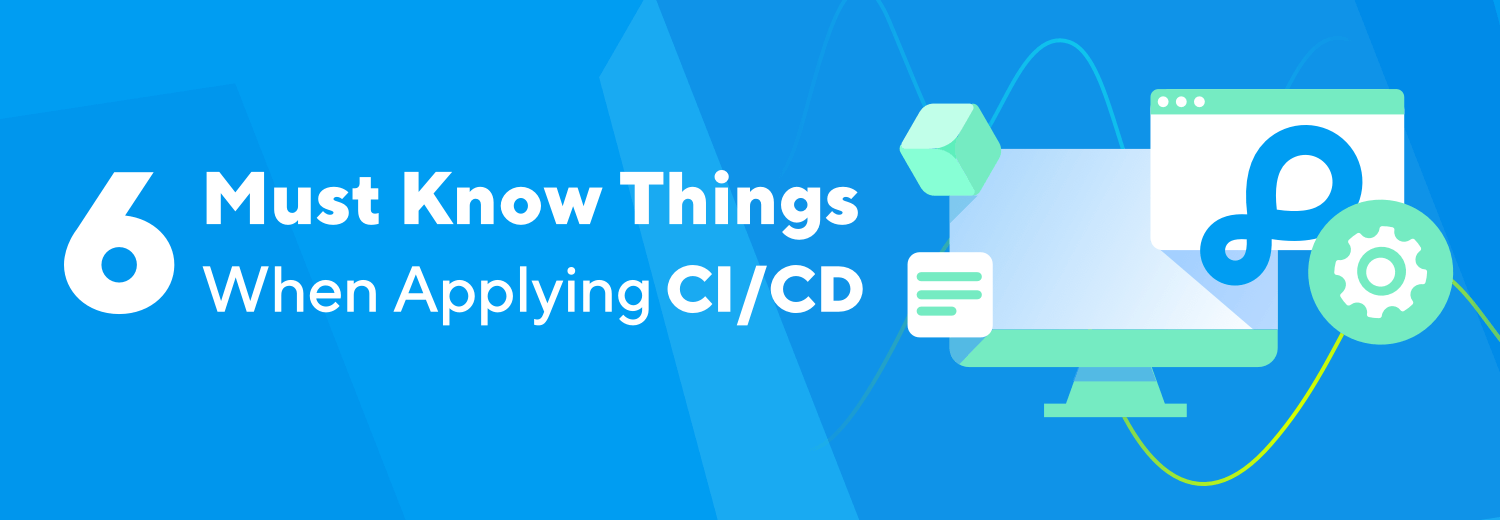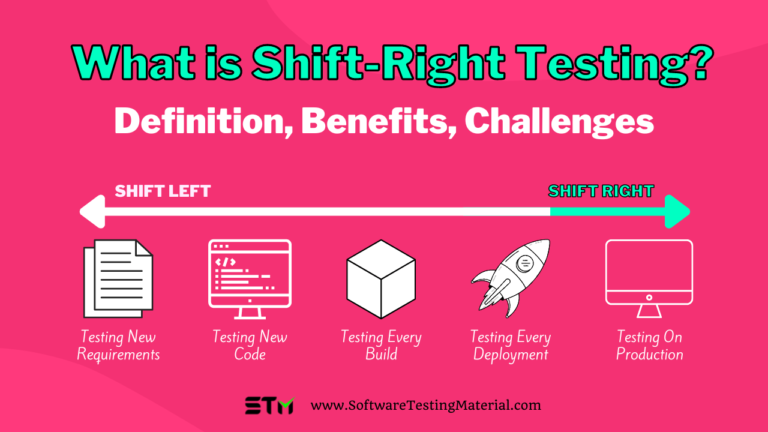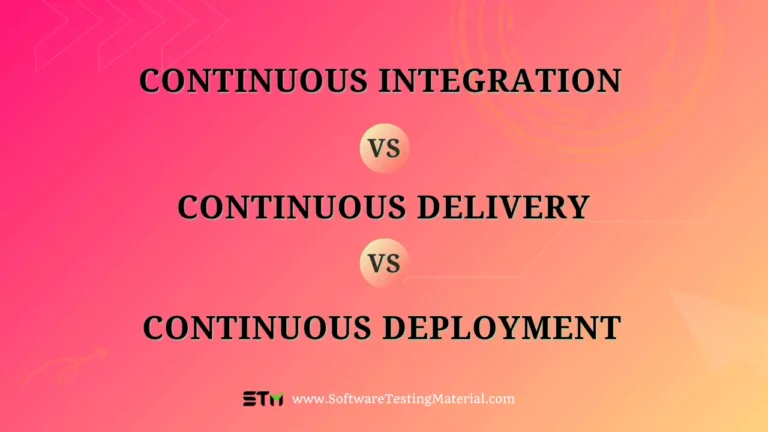6 Must Know Things When Applying CI/CD
Introduction
Continuous integration and Continuous Delivery are the two of the essential elements of a DevOps environment. Continuous integration allows you to continuously integrate code into a single shared and easy to access repository, whereas continuous delivery allows you to take the code stored in the repository and continuously deliver it to production.
So eventually, what will you experience if you implement CI/CD? The answer is “faster, better, more efficient, and less disruptive”. However, it can also be very challenging when incorporating these testing procedures into your organization. In this article, we will walk you through a list of 6 must-know things when applying CI/CD to help you get a better idea of how to solve CI/CD problems.

1. The Differences between Continuous Integration and Continuous Delivery
Continuous Integration is a DevOps practice that helps ensure that software components work together. In other words, it is the process of automatically integrating code changes from a multiple developers into a shared repository. CI is integral to speeding up software delivery at the coding and build phases. The main purpose of this methodology is to increase the frequency of code commits and reduce the complexity of connecting code from multiple developers.
Continuous Delivery, on the other hand, is another DevOps practice that focuses on delivering any validated changes to code (updates, bug fixes and new features) to users as quickly and safely as possible. Unlike continuous integration, continuous delivery has major benefits for end users. While continuous delivery together with continuous integration makes a complete flow for deliverable code packages, continuous delivery still covers a larger portion of the software delivery cycle compared to continuous integration.
2. The Differences between Continuous Delivery and Continuous Deployment
Continuous Delivery can often be confused with Continuous Deployment as both practices require you to work on small, frequent changes and obtain feedback. Compared to Continuous Deployment, which requires every change to be deployed automatically without the need of human intervention, Continuous Delivery, on the other hand, does not involve deployment to production on every change that occurs. With Continuous Delivery, you just need to ensure that the code is always in a deployable state, so you can deploy it easily whenever you want. Or, another great way to think about the difference is continuous delivery is having any code version ready to deploy to production.
3. Common Mistakes Made in Continuous Integration
Continuous integration is a complex process and mistakes can happen where you least expect them. Below are a few to watch out for while implementing this practice:
- Not fixing broken builds before adding more code
- Complex branching structures that can be difficult to sort through to find the link needed
- Using “hotfixes” to release branches
- Shutting off failing tests without first determining the failure cause and location
- Not continuously testing code as soon as it is entered into the shared repository
- Manual testing and manual builds can be used but it will seriously limit the number of bugs caught
- Not writing meaningful tests that can be run against every build to know if anything from the new code affected previous builds
4. Common Practices of CI/CD
Here are some best practices for establishing an efficient CI/CD pipeline:
- Develop a DevOps culture
- Implement and utilize continuous integration
- Deploy to every environment the same way
- Fail and restart your pipeline
- Apply version control
- Include the database in the pipeline
- Monitor your continuous delivery pipeline
- Get your CD pipeline flowing
5. Importance of Test Automation for CI/CD
Test automation is a crucial component of any CI/CD pipeline. The benefits of applying CI/CD cannot be realized if there is a lack of automated testing and a low level of test coverage. Teams need to perform automated testing at all levels including unit, integration, and system testing.
Unit test
Covers units of code such as methods, classes, and API services. Effective unit testing significantly increases test coverage for the whole system.
Integration test
Ensure modules and parts of the system work together smoothly.
System test
Runs on the entire system to simulate active users. The test environment should be as close to the production environment as possible.
Also, teams need to apply automation testing for multiple testing types such as functionality, usability, performance, load, stress, and security.
6. Best tools used for a CI/CD pipeline
Amid the variety (and possibly overwhelming) software offerings for continuous integration and continuous delivery, the answer lies in which CI/CD purpose and stage you are at a particular moment. Here are some of our recommendations:
- Source code repository: GitHub, Bitbucket, GitLab
- Continuous integration server: Jenkins CI, TeamCity, Travis CI
- Build tool: Gradle
- Automated testing tool: Katalon Studio, SauceLabs, SoapUI
- Code infrastructure management: Terraform
- Configuration management: Ansible
- Deployment tool: Jenkins, Docker
- Collaboration: Jira
Learn more: Most Commonly Asked Questions about CI/CD
Conclusion
Without a doubt, continuous integration and delivery are the two powerful and trendy software development methods that have been favored by many large organizations nowadays. However, in practice, a CI/CD pipeline has many complex steps that can cause many headaches when implementing it. So make sure that you are aware of the barriers to these two notions, you may find yourself headed for disaster.
Related posts:
- What is Continuous Testing? Comprehensive Guide for Newbie
- What is CI/CD 101 | All You Need To Know
- 7 Reasons Why Organizations Should Adopt CI/CD
- What is Shift-Left Testing? | Definition, Benefits, Challenges
- Microservices Introduction | Definition, Types, & Benefits






